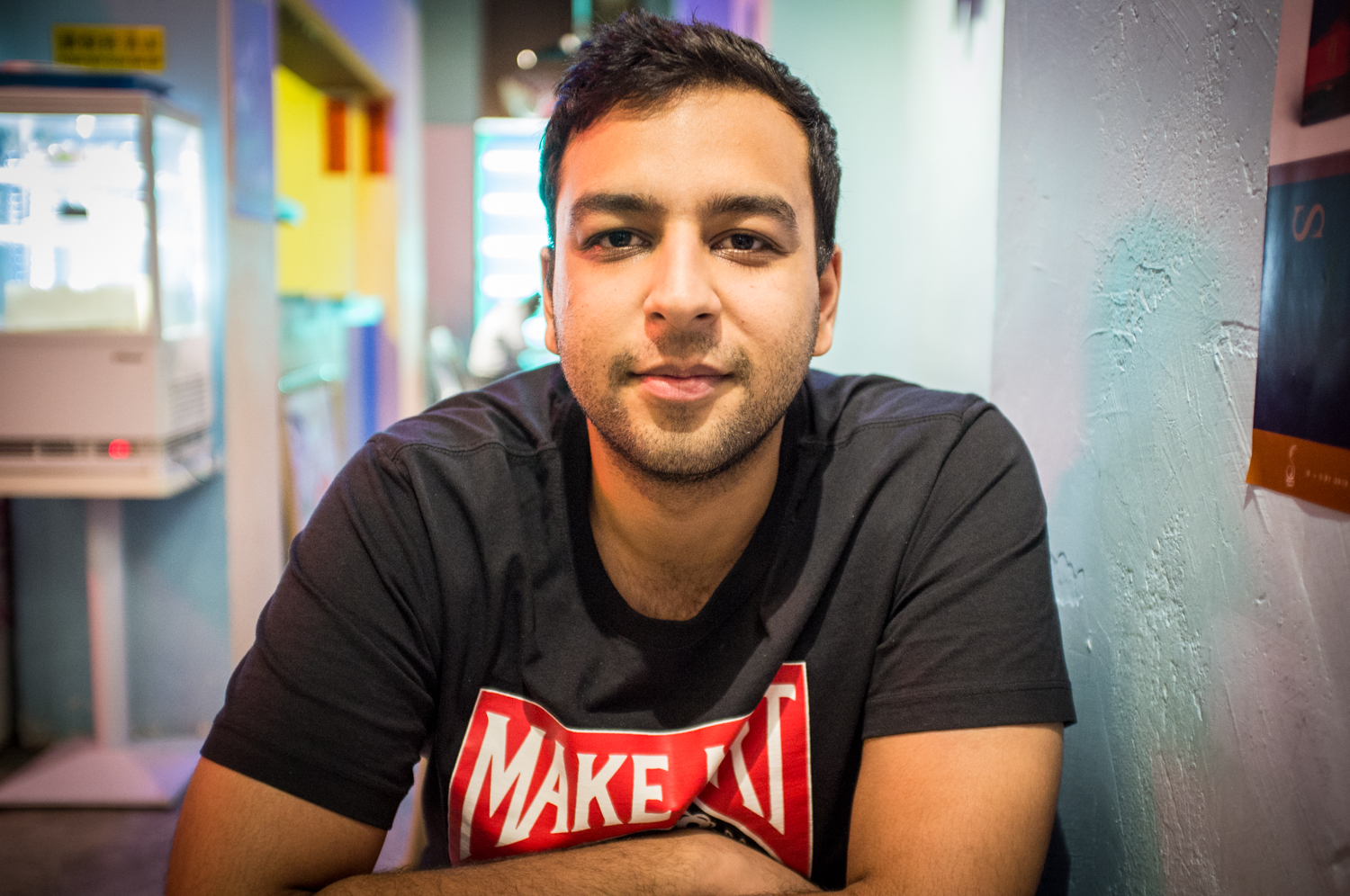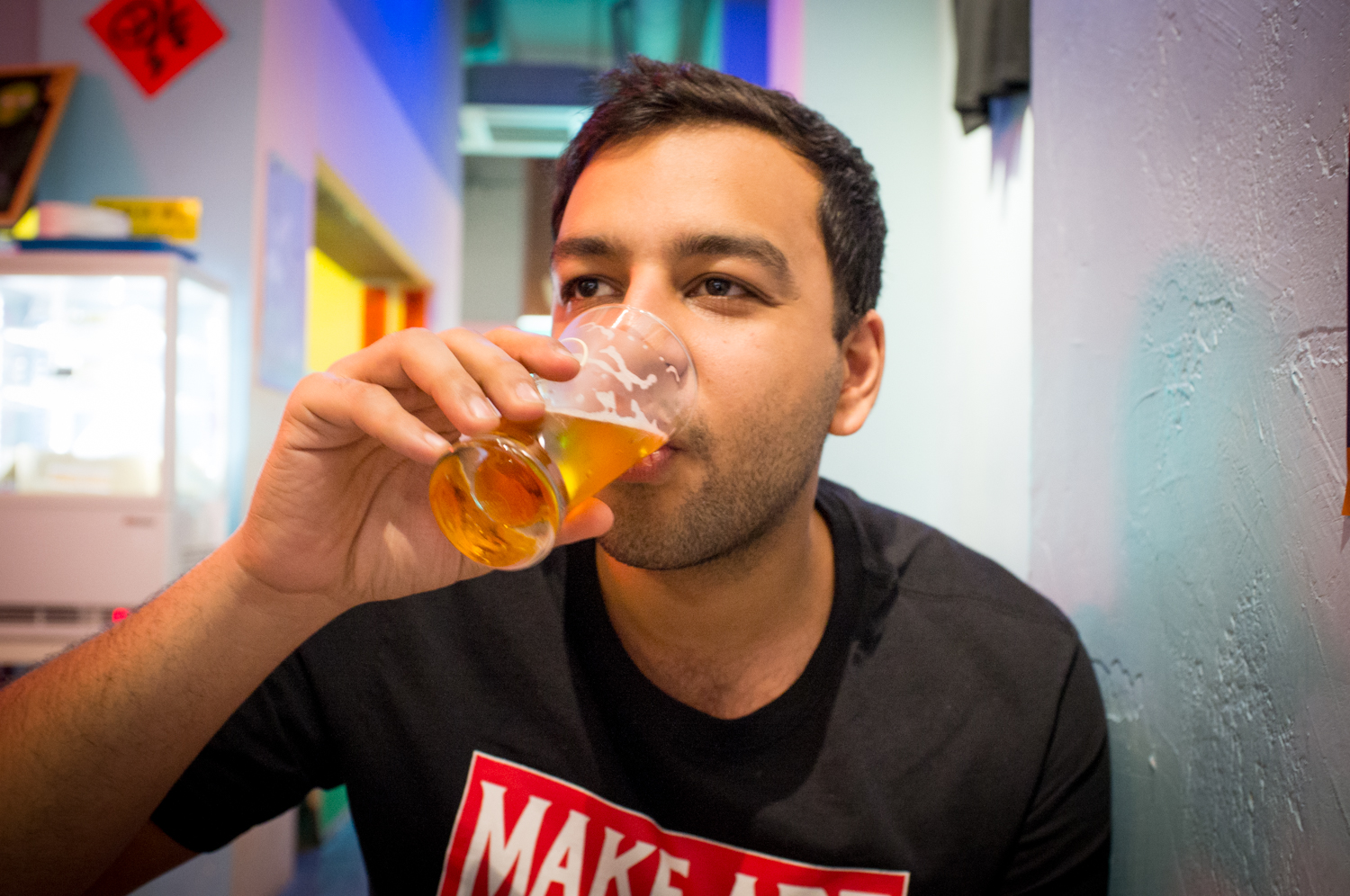How to do guerilla business development for a new industry — BestBev
Archive Date: April 19, 2018

BestBev was born in March 2013, and within months had their first shipment of craft beer into Hong Kong. Since then, its Shaheen Budhrani, Shakib Pasha, and Arnold Lee have introduced a host of award-winning overseas beers and ciders into the Hong Kong market and acquired an industry competitor by the end of 2017. BestBev runs a traditional B2B import and distribution model to restaurants, bars, and hotels across Hong Kong and Shaheen shares how they did guerrilla business development and built industry relationships before the market got too hot.
All of the BestBev co-founders had full-time jobs. Tell us how you took the dive after meeting to start a business together.
BestBev was incorporated in March 2013 and our first shipment arrived around June/July. My partner and I met through our day-jobs and immediately clicked over our love of craft beer. At the time, craft beer was already big in other global cities like London and New York, but Hong Kong is typically 5 years behind these markets in adopting trends. We were aware of a couple of potential competitors that had started, but no one had really made a huge splash in the market. There was clear opportunity to be had.
I’ll say upfront, we didn’t do anything that innovative. We saw a huge gap in the market and felt it was crazy to not take the opportunity that was staring us in the face. Hong Kong has no tax on beer, so initial distribution for import was cheaper than brewing. Unlike other cities, where local brewing developed the craft beer culture, Hong Kong went the other way around.
Can you quickly recap how you signed your first breweries and restaurants?

Signing the deal for our first few breweries were quite easy as it was clear that breweries in the West were facing saturation points and were looking to expand abroad. The movement had already begun in Japan and there was some loose track record in Singapore, so it was easy to convince the breweries that Hong Kong would be able to pick up traction soon. We convinced them we were in it for the long run and had a strong sense of wanting to invest in brand building as opposed to ‘trading’.** **
Its absolutely essential to understand that every customer is different, especially at the beginning. We segmented and changed our approach for each one.** **
Fulfilling orders often reveals huge gaps in operations. How was your first experience of delivering an order?
We were more interested in the physical sale and only very late understood the need to collect payments on orders that were going out. We just got so excited to deliver and grow the distribution network.** **
We were all over the place in that first year. It was absolute chaos. We were selling hard when that first batch arrived, then we opened up the warehouse management system, and we had enough stock to last us 1 week. We had to do a lot of customer management to ease our demand and ensure they would still be our customers when subsequent orders arrived.
How were you sure that craft beer was a viable market in Hong Kong?

Craft beer was already mature in other global cities. Even though Hong Kong didn’t have it yet, there were people who had interest (such as expats). Since we were basically the first to open our doors, it was like squeezing a lemon that had been around for ages. The orders just kept coming because at first we were the only ones and that meant we were talking to buyers from hotels and operations directors from restaurants.
How did you position yourself and get to become distributor for community and arts events?
Very good question. I think because both my partner and I came from trading backgrounds, we understood the need to make the business more of a social connector and a ‘provider of good times’ as such. We didn’t want to be just traders. We wanted to connect with movers and shakers in the industry and more importantly have that level of association with great establishments.
Now, a few years later, it’s a saturated market. If you’re trying to start an import business now and talking to the buyers from hotels, they have all the craft suppliers.
Looking back, how have you managed to secure a market for BestBev once competitors started sprouting up?
Strong relationships and constant innovation of the portfolio. We jumped from smaller breweries to slightly larger and by then we had relationships with up and coming breweries in the West. As soon as they picked up big awards or got traction we could convince them that we were the right partner for them. The market now is highly overcrowded. There are already 20+ local breweries.
What’s one of the biggest barriers building business relationships for you?
In Hong Kong, a lot of the people we met didn’t think about quality. It was all about cost. We spoke to people in charge of buying or operations for international hotels that were convinced by legacy marketing. Squeezing into a market with people who had been sold a message from well known international beer brands for 60 years was tough. Now, if you were going to start importing and talking to the buyer now from hotels, they wouldn’t be interested anymore for another reason — they have all the craft beer suppliers already.
Can you give examples of milestone partnerships you secured?

One achievement is that we supply Beef & Liberty. We met the operations director even before they opened into Hong Kong and are still working with them today. They’re opening their next branch at the Hong Kong Airport, which is exciting for us as it’s our first presence in the airport.
Another big win was turning a confrontational situation into a business opportunity with one of the high-end supermarkets in Hong Kong. Basically, we found that they were parallel importing a different size of a product we had and notified them about it. There’s no law in Hong Kong against parallel imports, so they had no intention to remove the product. But since we did get an e-mail back directly from the relevant department, we couldn’t pass up the opportunity to continue the conversation. We approached them, dropped the dispute, showed them our portfolio and basically asked, “Is there something else that we could offer you?” Something in our portfolio piqued interest — an Australian cider range. It was a long vetting and testing process, but 8 months later our products were on their shelves.
What were your business development milestones?
As Director of Sales, many of my milestones went with sales:
- 100 invoice because it shows traction
- first 100k in sales because it proves there’s a market
- hitting our target in monthly recurring revenue
- hitting the target for the year
Did any of those help you decide to go full-time?
A lot of factors came together. I didn’t see an opportunity to grow with my job and basically the scales tipped for me. It was also financially possible for me to do so. The company had a budget that showed I could return up to 3 times on the investment in my salary within the first quarter of my coming full time.
There was a clear roadmap for on how we could grow sales if we put in the hours. I made the transition not after we hit a number, but in order to hit our targets. After I went full time, we were pretty cash tight for a few months to pay my salary, but we got there.
You were in charge of business development. What skills did you apply most to secure deals?
I once interned at a company and was given a phone book where I made 100+ calls a day to sell to high-net worth individuals. A few months after I started, I closed a deal within 72 hours and made the record for the fastest intern to every do so. That job was very good training to learn what words get responses, how to keep someone on the line, and also how to move on quickly. You can’t teach that skill. You just have to do it. I applied the skills I learned in that job for sales here.
Sales, the people going out there and doing the talking, has a feel for the market. For example you know you can get another 10-20k / month by doubling the number of calls/meetings. You get to know the seasonal trends only after 3 years. The first 2 years, it’s impossible to have a budget — an entrepreneur who gives you one is winging it. There’s too much seasonality and variation, and not enough data to go on. It’s only years 3-5 that you have a budget to stick to to guide growth.
Any other avenues of business development that you pursued?
Events and collaborations with local artists. We saw more engagement on our online store and greater B2C revenue growth in months where we focused on content and event collaborations. This was a no brainer as we have higher margins in this model.
Down the road, I also co-invested in Coaster Magazine with a former BestBev sales executive who wanted to get back into writing. Before working with us, she was an editor for TimeOut. When she first started Coaster Magazine, I was very involved, but later I had to step back and take a more hands-off investor approach. The publication isn’t a marketing initiative and BestBev never focused on marketing, but the magazine has also raised public interest in craft beer, which is good for the industry.
What learnings would you pass on to fellow entrepreneurs?
For example, businesses in large markets like the US would think that HK$2-4 million (US$300,000-500,000) per year is small when you’re hustling every single day. But for entrepreneurs in smaller markets like Hong Kong, Taiwan, Cambodia, Vietnam, US$500,000 is pretty good. Entrepreneurs have to celebrate milestone victories because it means progress and going forward.
By the end of 2017, BestBev acquired a larger competitor, AmeriCraft Imports and combined the two importers’ portfolios. Shaheen has taken a backseat and given the role of Managing Director to one of his co-founders.